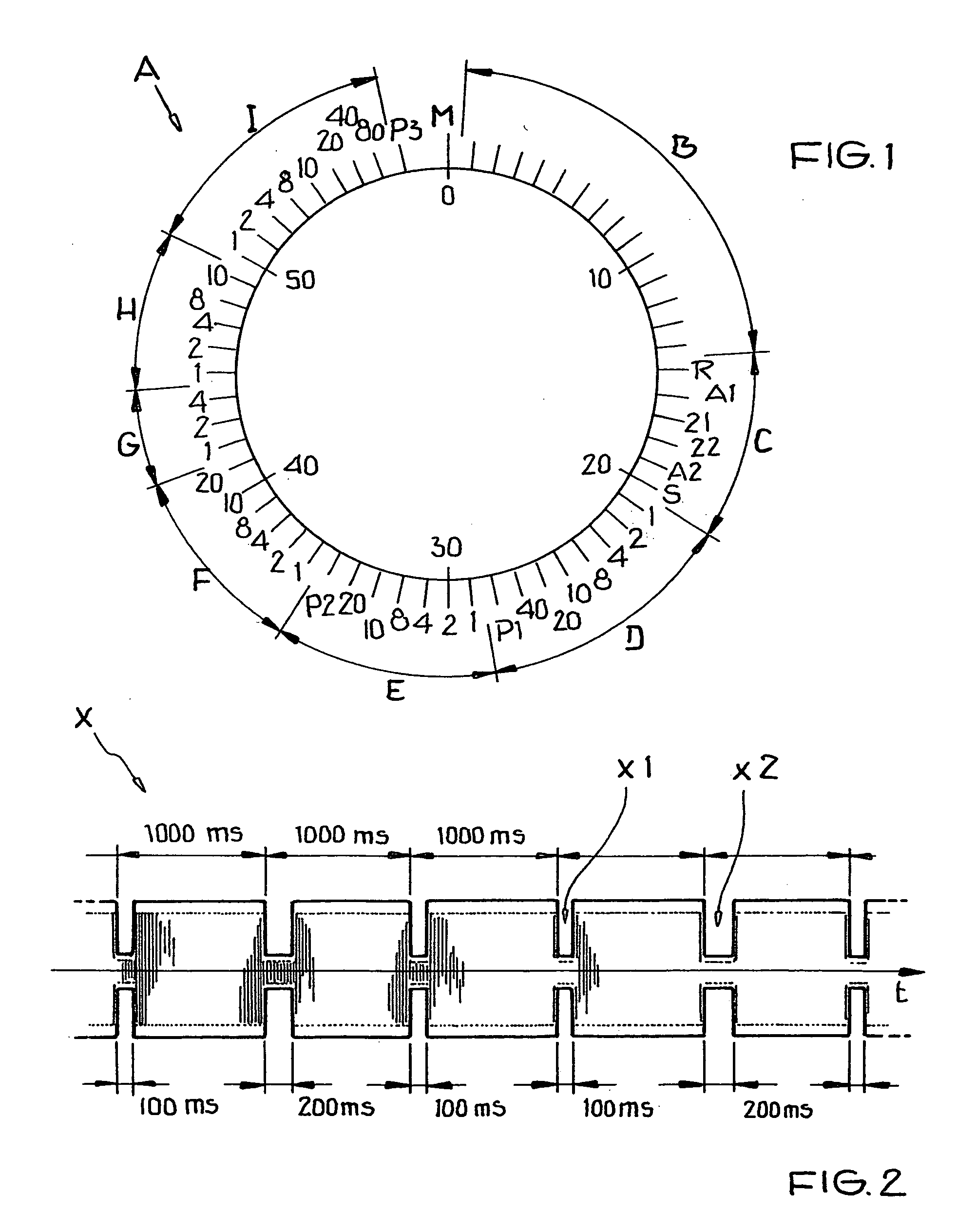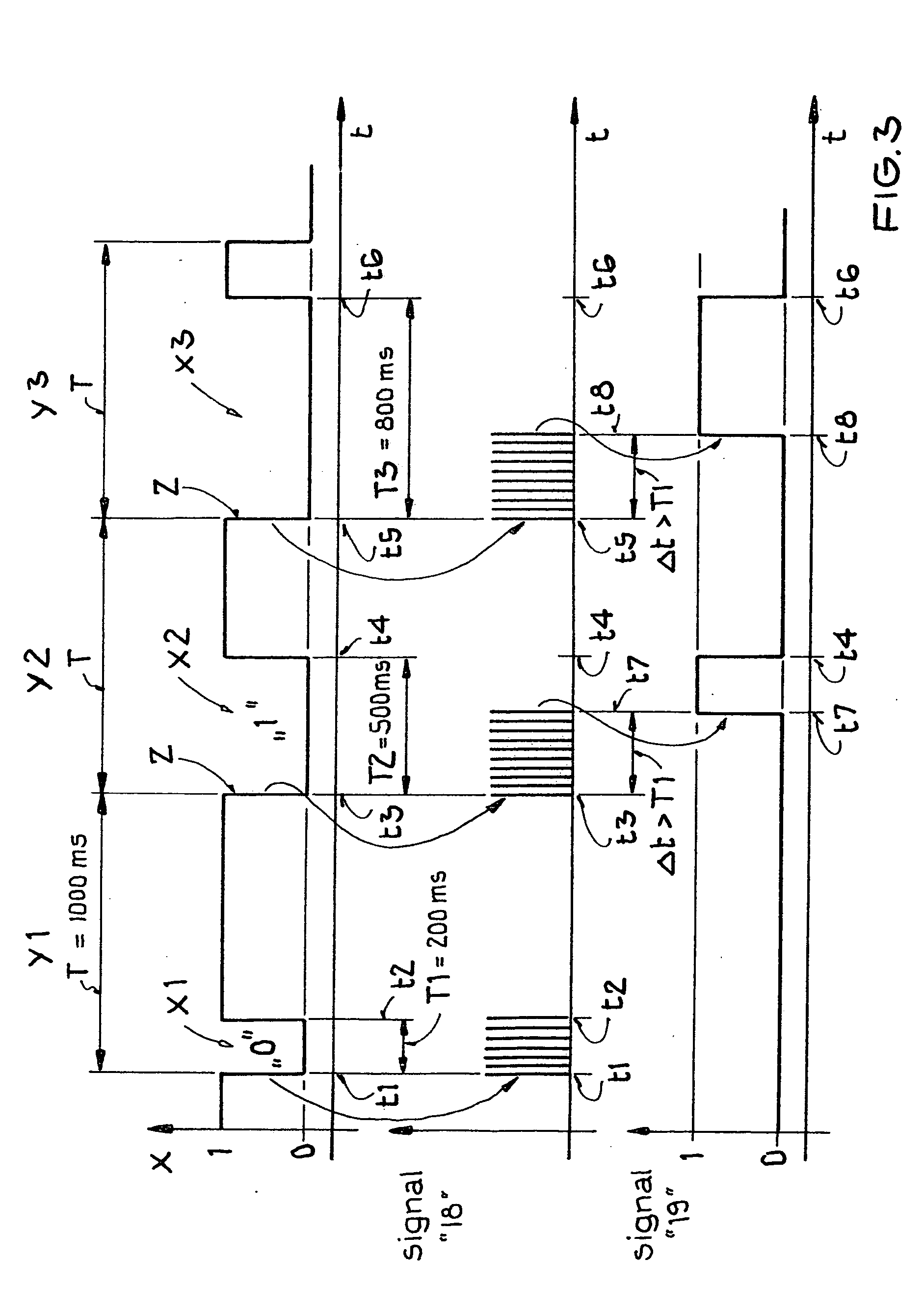Radio-controlled clock and method for gaining time information
a radio-controlled clock and time information technology, applied in the direction of clocks, synchronous motors, instruments, etc., can solve the problems of noise signals, noise signals, noise signals, etc., and achieve the effect of reducing noise and nois
- Summary
- Abstract
- Description
- Claims
- Application Information
AI Technical Summary
Benefits of technology
Problems solved by technology
Method used
Image
Examples
Embodiment Construction
[0057] In the drawings all equivalent or functionally equivalent elements and signals are designed with the same reference characters unless otherwise indicated.
[0058]FIG. 3 shows a portion of a time signal transmitted by the United States time signal transmitter WWVB. This time signal diagram is used for explaining the invention. It should be noted that the illustration of FIG. 3 is not suitable for reproducing a special encoding. FIG. 3 is merely shown as an example. Further, the scale along the time axis t has been enlarged to provide a better overview.
[0059]FIG. 3 shows three complete time frames Y1, Y2 and Y3 of the time signal X. The duration of each time frame is exactly T=1000 msec. The time signal X transmitted by the US time signal transmitter WWVB comprises three different second impulses for the binary encoding. These second impulses represent amplitude reductions. More specifically, first amplitude reductions X1 have a duration of T1=200 msec. Second amplitude reducti...
PUM
 Login to View More
Login to View More Abstract
Description
Claims
Application Information
 Login to View More
Login to View More - R&D
- Intellectual Property
- Life Sciences
- Materials
- Tech Scout
- Unparalleled Data Quality
- Higher Quality Content
- 60% Fewer Hallucinations
Browse by: Latest US Patents, China's latest patents, Technical Efficacy Thesaurus, Application Domain, Technology Topic, Popular Technical Reports.
© 2025 PatSnap. All rights reserved.Legal|Privacy policy|Modern Slavery Act Transparency Statement|Sitemap|About US| Contact US: help@patsnap.com



